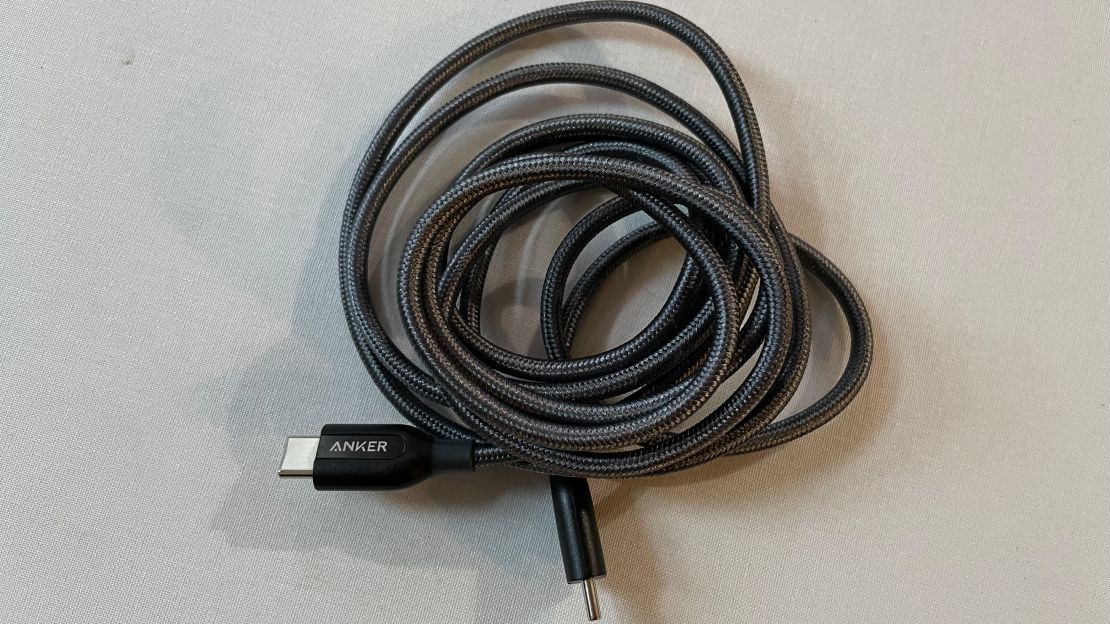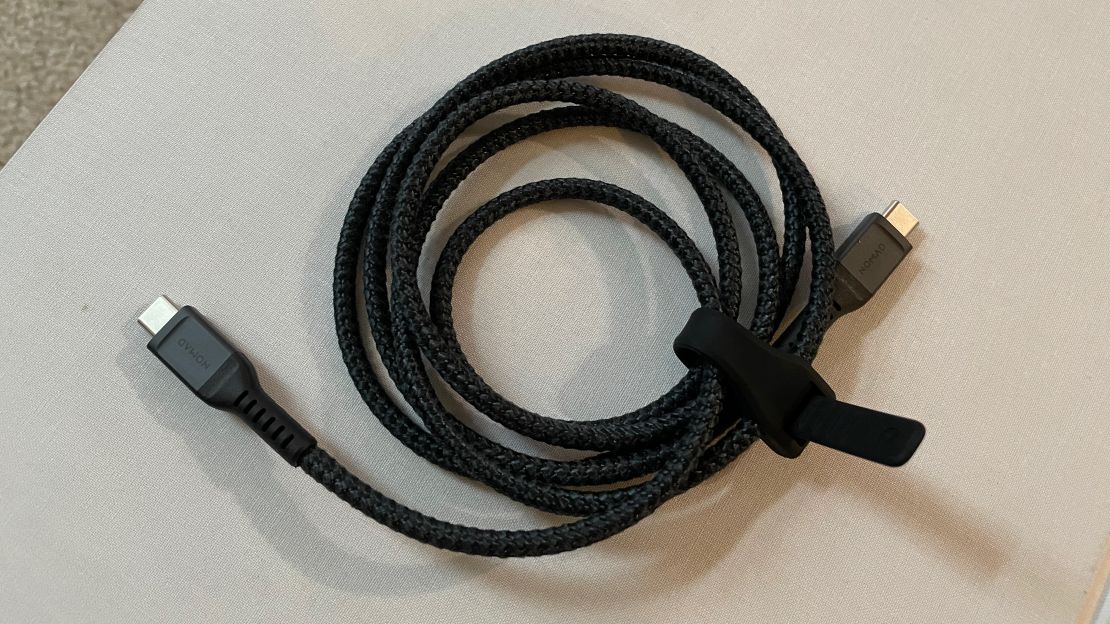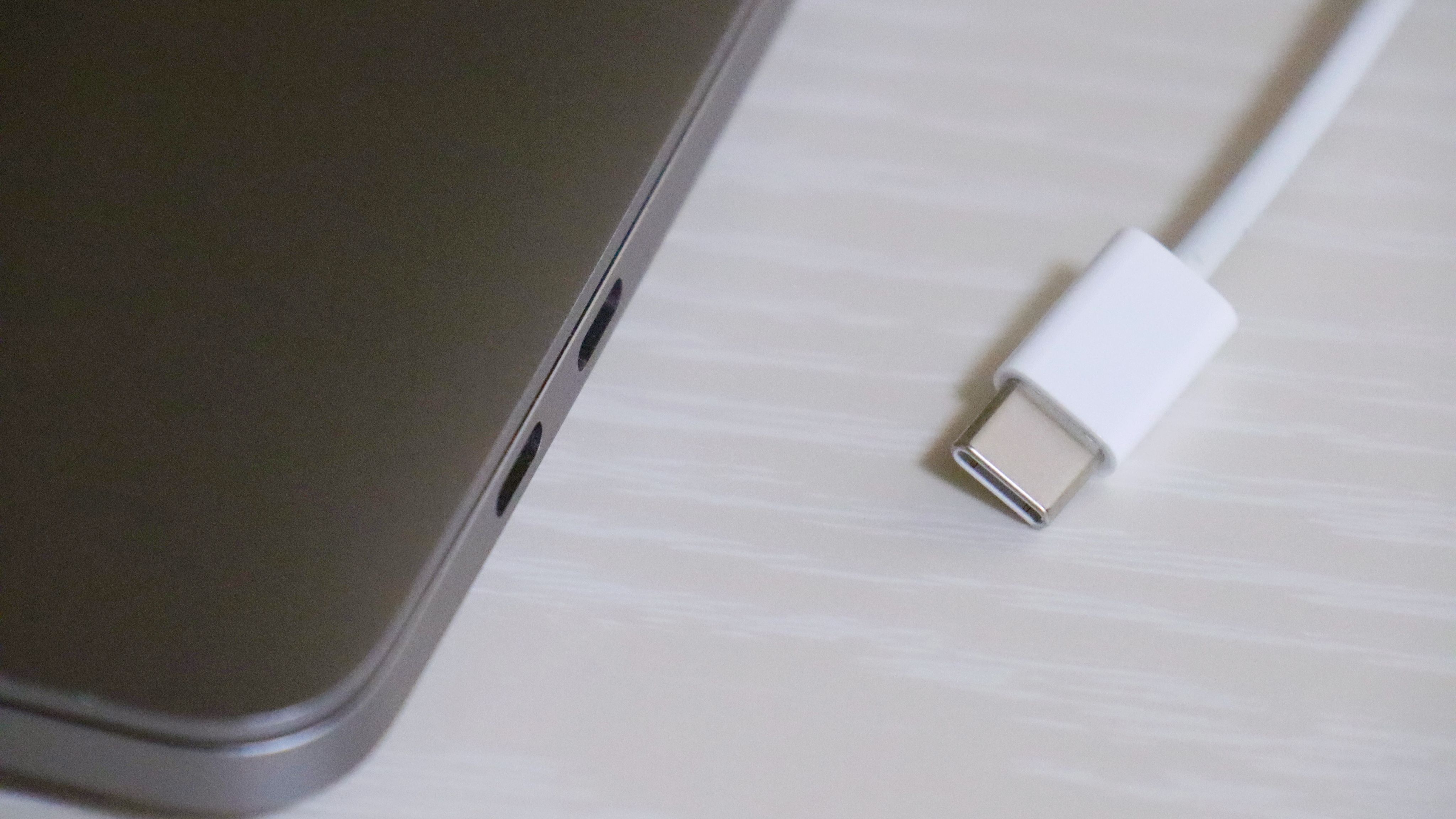Whether you’re using it for data transfer or charging a phone, tablet or laptop, a USB-C cable is a pretty crucial accessory. We’ve spent the last few weeks testing an assortment of USB-C cables, and two rose through the ranks of our testing — an overall pick for connecting backup drives, charging phones or charging tablets, and a more robust cable that will do all that and charge a laptop.
Best overall USB-C cable: Anker Powerline+
$10 at Amazon

Anker’s Powerline+ does everything you need a USB-C cable to do, with a durable design and a great warranty. For $16, you’ll get your choice of a 3- or 6-foot cable in gray or red. It even comes bundled with a fabric carrying pouch, which makes this ideal to keep with you for work or travel.
The Powerline+ features a braided outer shell that is soft to the touch but durable, with a double layer of nylon, though it isn’t as thick as Nomad’s or Satechi’s braided USB-C cables. This outer shell shields the wires underneath but isn’t unreasonably stiff, and we didn’t notice a ton of heat or warmth during charging; more on that a bit below. In our bend tests we didn’t manage to damage the Powerline+ or to distort its shape, nor could we tear the cable or cause blistering.
Hard rubber ends give the USB-C connectors some extra protection and should help minimize the risk of fraying, though if that does occur, Anker covers this cable with a lifetime warranty. We didn’t have any difficulty using these connectors through cases on multiple phones, including the Pixel 4a 5G and Galaxy S21, and laptops and tablets, nor did we have trouble with the cable blocking adjacent ports in a USB-C hub. When applying pressure to the ends of the cables, this didn’t show any immediate signs of wear.
We were able to fast charge the Galaxy S21, Google Pixel 5 and even an iPad Air using the USB-C to USB-C cable. The Powerline+ won’t be the right choice for some laptops, however, since it only supports up to 60 watts Power Delivery in both the 3- and 6-foot variants. This is plenty of power for a phone or tablet, but it will not carry enough power to charge a MacBook Pro. You will need a cable for those devices — like our upgrade pick, the Nomad — that can support 100-watt Power Delivery.
Data transfers on Anker’s Powerline+ were in line with nearly all the cables we tested. We could move content like photos, documents and music with minimal wait times.
If you need to make USB-C to USB-A connections to connect peripherals or charge multiple devices from a USB-A hub, for instance, Anker does offer the Powerline+ in a USB-C to USB-A variant as well. That model was (given the USB-A connection) slightly slower with data transfers and charging times, but not by a significant amount. That said, if you want the best performance and to invest in a more future-proof cable, we suggest you opt for the USB-C to USB-C variant and pick up a USB-C power brick for fast charging.
Anker’s Powerline+ checks all of the boxes and comes in at an affordable $16. It’s more durable — and will likely last longer — than the USB-C cable included with your device.
The upgrade pick: Nomad USB-C to USB-C
From $25 at Nomad Goods

If you need a USB-C cable that is more roadworthy or one that can charge a MacBook Pro or other full-size laptop, the Nomad USB-C to USB-C cable is your top choice. And at $29.99, it’s not as affordable, but you’re getting a heavily built, seriously high-quality cable that supports 100-watt Power Delivery and can handle all of your USB-C tasks.
We were able to safely use the 1.5-meter Nomad cable with both an 85-watt brick from Apple and a 100-watt Anker charger, which we used to charge both a 13-inch and 16-inch MacBook Pro. We were able to fast charge a Galaxy S21 Ultra, a Fire HD 10, an iPad Pro, an iPad Air and even Sony’s WF-1000XM4 headphones.
Nomad opts for a braided design that is quite a bit thicker than the Anker Powerline+ or the other cables we’ve tested. With a thick Kevlar outer braid, we have no fears of the internal wires being compromised by everyday use. Substantial rubber sleeves protect the connectors, ensuring that the cable won’t fray or kink.
This cable was quick to bounce back and excellent at retaining its shape through all of our tests — tight coils, stretching, fitting though narrow spots. While we would have liked to see a carrying pouch included, a built-in cable management tie keeps the Nomad tidy while you’re carrying it around. If you do manage to break or tear the cable, Nomad covers it with a five-year warranty. It’s not as good as Anker’s, but it is in line with Belkin and other manufacturers.
The $25 price tag may be expensive for a cable, but Nomad’s USB-C to USB-C Kevlar option rises above the rest that we tested, with better design and support for anyone who wants a dependable cable to charge a larger laptop.
How we tested
Over the past few weeks, we’ve tested each USB-C cable with a range of devices, including a Galaxy S21 Ultra, a Galaxy S20, a Pixel 4a 5G, a Pixel 5, an iPad Air, an iPad Pro, a Lenovo ThinkPad X1 Carbon, a 13-inch Macbook Pro and a 16-inch MacBook Pro. We paired it with the included charging brick or used an Anker Nano variant for the charging tests with many of these.
We charged each device to 50% to get a baseline and compared that with promised charging times to test for charging speed. We also measured how long it took to get from 0% to 100%. Considering that some cables were shorter (at 3 feet) and others longer (at 6 feet), we also took that into account for charging times. Longer cables had increased times for charging, but nothing that was too wild. For data tests, we completed multiple data transfers and backups on a range of devices.
After these data and charging tests, we examined the design of each cable and conducted some tests. We paid close attention to the materials used, how the plugs were structured and the flex of each cable. Lastly, we noted and examined the warranty for each cable.
Others we tested
Anker PowerLine II USB-C to USB-C
From $10 at Amazon
Anker’s PowerLine II cable ditches the braided outer shell for a rubber one, and this exact style was our pick for Best Lighting Cables, but we vastly prefer the braided design of the PowerLine+ This cable felt it more rigid and was quick to show bend marks. It performed well for charging and data transfers, though it did not support the promised 100 watt charging spec in our testing. On the data side, PowerLine II is rated at a full 10Gbps for data transfers.
Anker PowerLine III USB-C to USB-C
$13 at Amazon
The PowerLine III is the big sibling of the PowerLine II, with a similar build that uses a malleable rubber outer shell. In terms of charging technology, it’s limited to 60 watts like the PowerLine+, and is a bit more expensive at $13.
Belkin BoostCharge Braided USB-C to USB-C Cable
$15 at Belkin
Belkin’s BoostCharge braided cable comes in two flavors: USB-C to USB-C, or USB-A to USB-C. It is a robust braided cable, though pretty rigid by comparison with the Anker. We especially appreciated the plastic endcaps.
Belkin Mixit DuraTek USB-C Cable
From $20 at Amazon
Belkin’s DuraTek was one of the lightest we tested, but it didn’t sacrifice build quality — this is a braided cable with an inner layer of Kevlar. It’s paired with shiny silver plug caps and a nice rubber covering to protect the cable from fraying or extreme bends.
Satechi USB-C to USB-C Cable
$20 at Satechi
Satechi’s USB-C offering is similar to Nomad’s Kevlar solution but with a less robust build. Notably, the area near the USB-C plugs doesn’t extend as far out over the braided cable, which made us concerned about damaging it in runs involving tight bends. It is also rated for 100 watts and performed well in our testing for both fast charging and data transfer.


